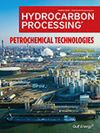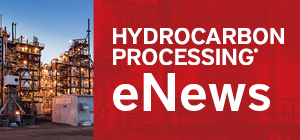Reactors
Lummus to supply ethylene technology to Silleno's PE plant in Kazakhstan
Lummus Technology announced a contract award from Silleno for an ethylene unit, which will be part of the first polyethylene plant to be built in the Republic of Kazakhstan.
BASF outlines its sustainable roadmap towards a circular economy
BASF’s Performance Materials division revealed its strategic roadmap toward achieving carbon neutrality by 2050 and highlights key milestones on its way to a circular economy.
Linde to invest $2 B in Canada to supply hydrogen to Dow's Alberta chemical complex
Industrial gases firm Linde said it would invest more than $2 B to build a clean hydrogen facility for supplying to Dow's Path2Zero production complex in Alberta, Canada.
ADNOC deploys pioneering AI-enabled process optimization technology
Following successful initial operations, ADNOC announced the deployment of an industry leading artificial intelligence (AI)-enabled process optimization technology--Neuron 5--across all ADNOC facilities across thousands of critical pieces of equipment essential for production, including compressors, valves and generators.
Validate skin temperature in refractory-lined pipes using manual calculation vs. FEA analysis
Accurately estimating skin temperature and understanding the impact of refractory lining on thermal performance are crucial aspects of piping system design, operation and maintenance. By recognizing the multifaceted role of refractory lining in enhancing operational efficiency, mitigating risks and extending the lifespan of industrial piping systems, industries can optimize their processes and ensure the reliability and safety of their infrastructure.
Utilizing pilot plant operations for new chemical process technology development: A roadmap to scale up success and commercial plant safety
To demonstrate a new chemical process technology (flowsheet, raw materials, product) or improve an existing one, pilot plants are designed and operated at a scale between laboratory benchtop and commercial scale—often with specific goals for operability, product quality, economics and process safety. Identifying where potential safety, technical risks or uncertainties may occur is always a key goal in evaluating a new process.
The purification of benzoic acid using dividing wall columns
In one recent project for a customer based in Asia, the authors’ company suggested the combination of distillation and crystallization techniques to obtain high-quality purified benzoic acid. Encouraged by the successful startup of this processing train, the customer began to schedule a second project. The authors’ company was asked to optimize the purification process to improve cost and operational efficiencies. The two existing columns, which remove lights and heavies, respectively, from the crude benzoic acid feedstock were investigated to identify key opportunities. The feasibility study based on the feed composition confirmed that the existing columns could be converted into a single dividing wall column (DWC).
The attractive market opportunity for synthetic graphite: Graphite as an energy transition material (4)
Given the attractive demand projection, investors must understand the benefits and return on investment for natural and synthetic graphite routes. This article establishes the pros and cons for each, and specifically highlights the emerging opportunity for upgrading and repurposing smaller petcoke units to needle coke units, therefore contributing to fulfilling the rising demand for synthetic graphite.
Utilize a hydrogen reactions lab to optimize renewable fuels processing
Leading technology developers in the refining space are utilizing various catalysts to enhance the adjusted reaction chemistry, but this does not directly address how to optimize hydrogen utilization for the hydrodeoxygenation and isomerization/cracking processing steps. To ensure the right equipment outlay and calibration for these hydrogenation applications, replicating the process in a lab setting can help identify efficiencies and yield improvements for a fraction of the cost that a refiner would incur attempting to achieve that optimization through modifications at commercial scale.
Meet gasoline quality and process safety requirements through new alkylation technologies
The catalytic alkylation process is very attractive to countries with high gasoline consumption and a sizable availability of LPG. This process can produce high-octane gasoline with low levels of contaminants, although there are high capital investment and operational costs associated with this technology.

- China's Wanhua Chemical starts operation at new east China cracker 4/4
- Brookfield Infrastructure announces the acquisition of Colonial Enterprises for $9 B 4/4
- PBF restarts some units at Martinez refinery after February fire; fire-damaged units remain shut 4/4
- Japan to curb gasoline prices from June to cushion U.S. tariff blow 4/4
- Evonik presents innovative "Debonding on Demand" concept for more sustainable bonding 4/3
- Oil, gas and refined product imports exempted from Trump’s sweeping tariffs 4/3




